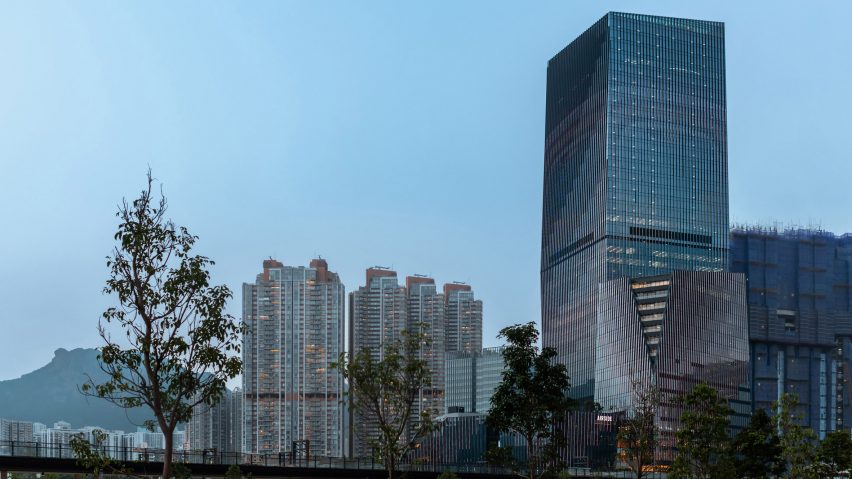
Snøhetta unveils chamfered skyscraper on site of former Hong Kong airport
Norwegian studio Snøhetta drew on textiles and tailoring for its design of the Airside skyscraper, which has opened at the old Kai Tak Airport in Hong Kong.
The project is formed of five interconnected glazed buildings in a stepped arrangement, with the lowest volumes located next to the Kai Tak river.
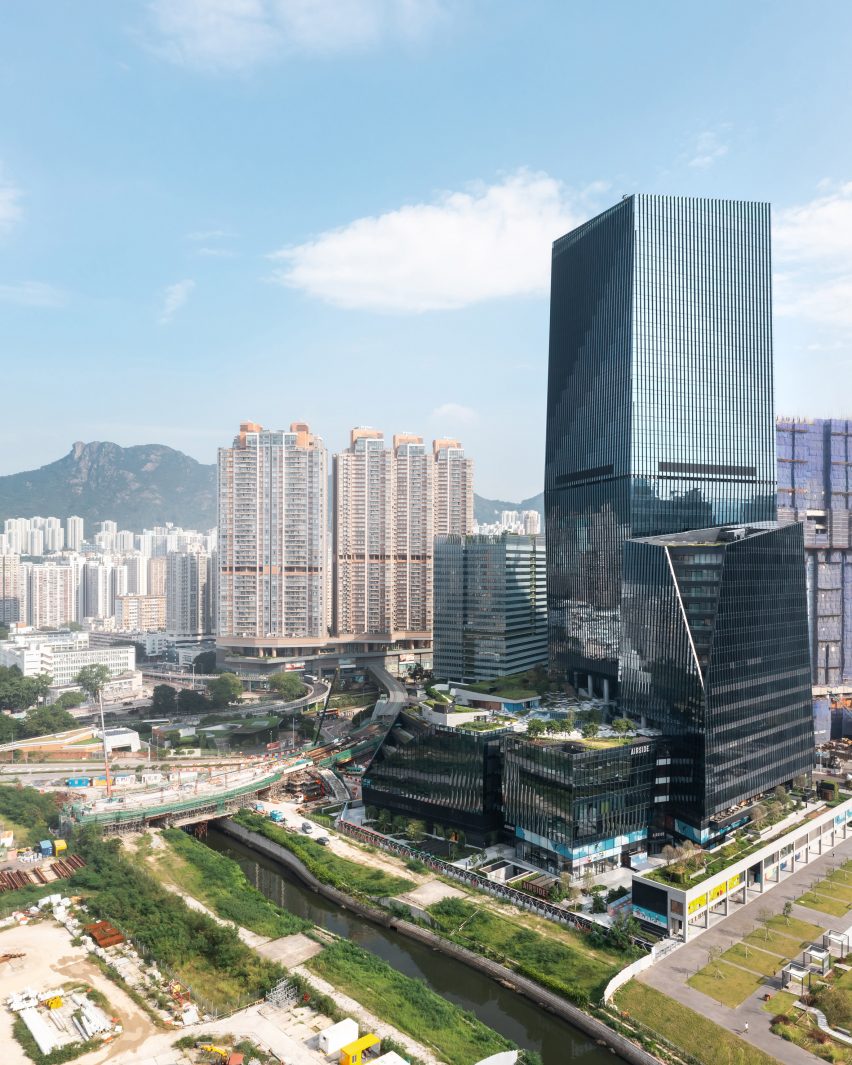
These lower volumes form Airside's base and merge with two towers, the tallest measuring 213 metres.
Snøhetta also designed landscaped plazas and roof terraces for Airside, which sits above the Kai Tak MTR station in the district that formerly held Kai Tak, Hong Kong's international airport from 1925 to 1998.
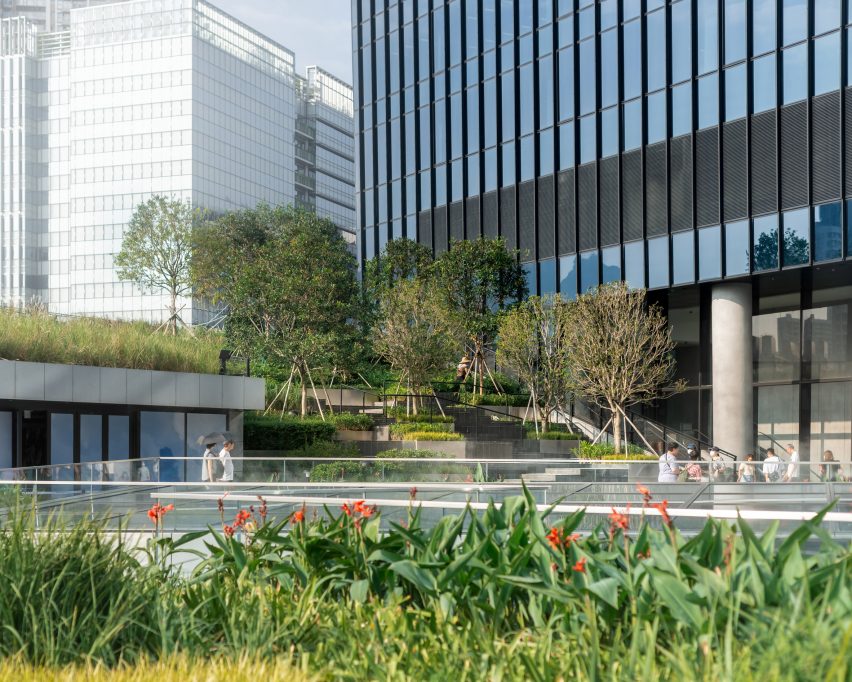
Inside, the lower buildings house 60,000 square metres of retail space, while the tower holds 100,000 square metres of office space.
The project's design is informed by Hong Kong's legacy of textile manufacturing and draws on different aspects of tailoring.
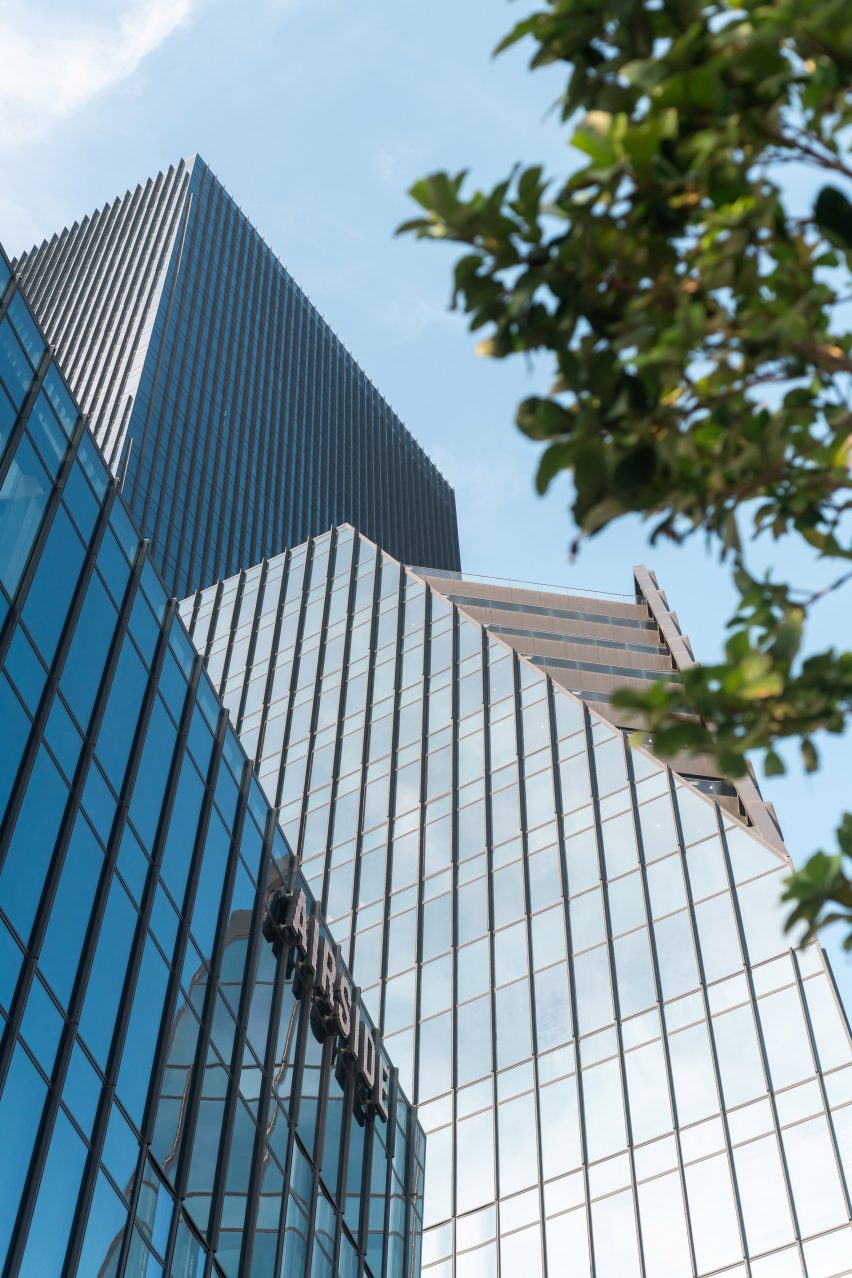
Airside's shape is formed of chamfered edges in reference to textile cutting, while the fluted glass that covers part of the facade is a nod to fabric draping.
"The building negotiates scales ranging from the urban to the human," said Snøhetta partner Robert Greenwood.
"It shapes a meaningful, inviting, and vibrant public realm for the thousands of people that will pass through it each day while bringing a new icon to the skyline and a focal point for the district," Greenwood continued.
Airside has received a LEED Platinum certificate and is the first private development in Hong Kong to receive five of the highest green building certifications, according to Snøhetta.
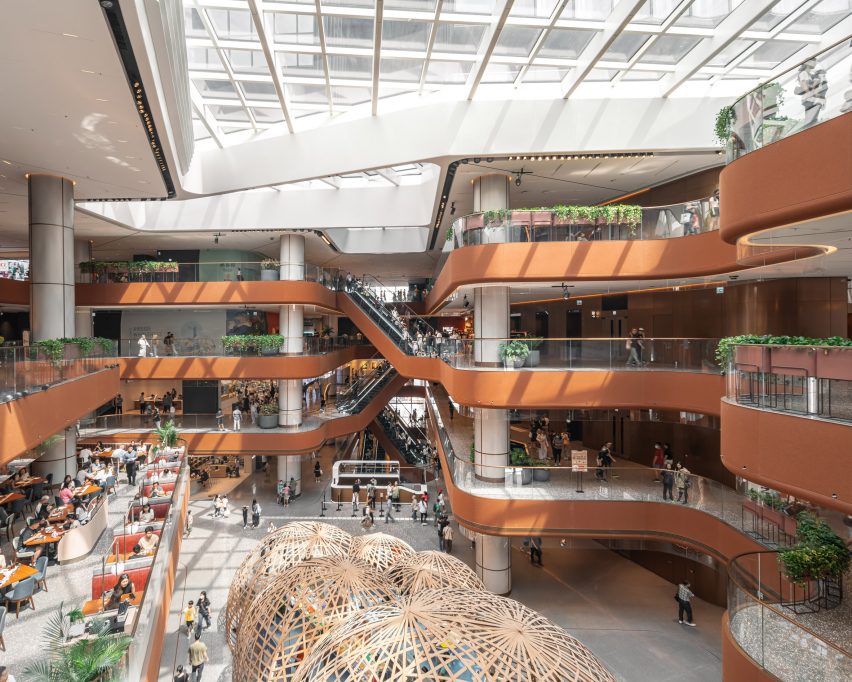
Inside, a retail atrium has spandrels decorated with a custom-designed woven textile that was made from upcycled plastic bottles.
Snøhetta aimed to create "inviting pedestrian landscapes" by using undulating and folding shapes throughout the interior, which features sloping walkways and multiple plazas.
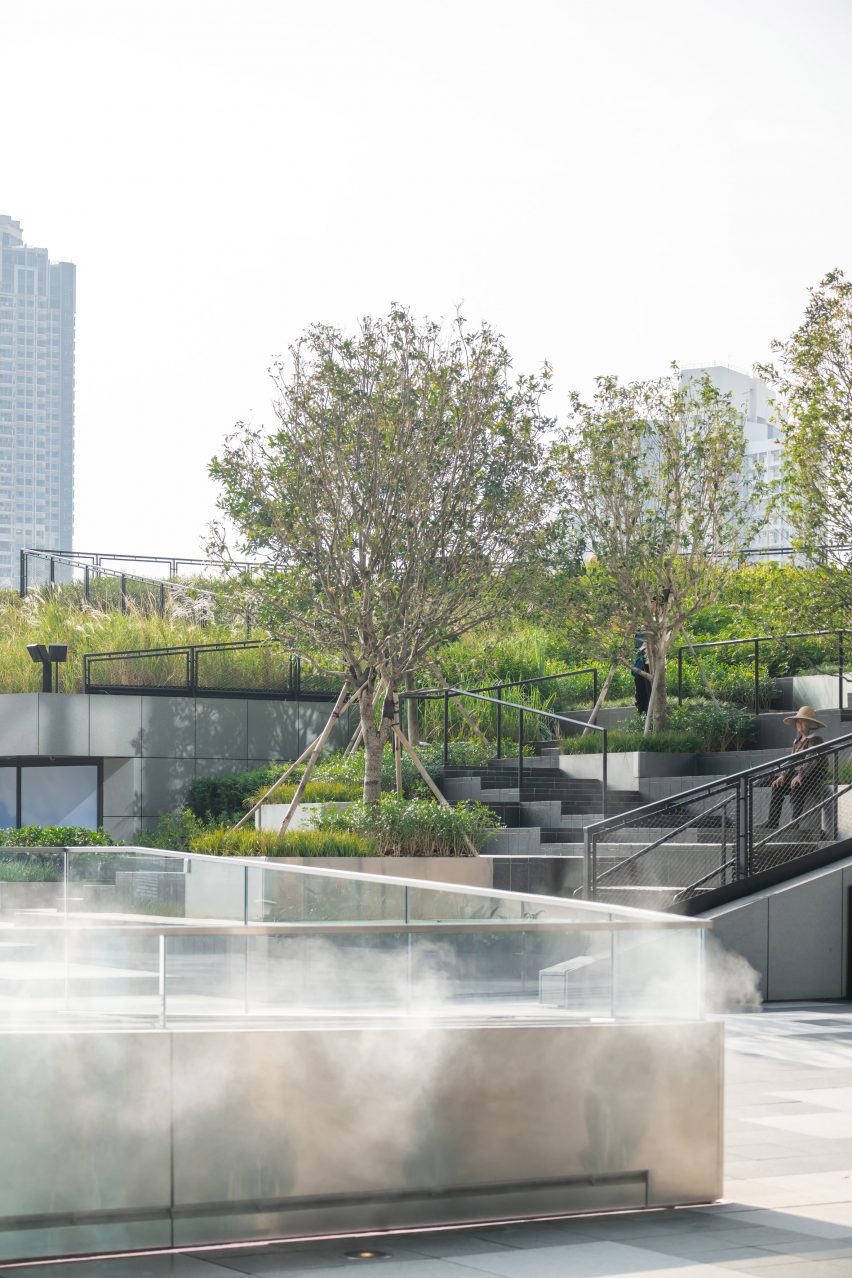
Airside, which opened in September, has more than 1,350 square metres of photovoltaic panels on its roof and also links to the Kai Tak District Cooling System, which uses chilled seawater from a central plant for climate control.
It also features urban farms and a landscape design with a focus on native species, as well as water features that help against the urban heat-island effect.
Other recent projects by Snøhetta include an extension for the Norwegian-American museum in Iowa and an elliptical planetarium in France.
The photography is by Kevin Mak.
Project credits:
Architect: Snøhetta
Executive architect: Ronald Lu & Partners (Hong Kong) Limited
Landscape architect: Snøhetta
Structural, geotechnical and civil engineer: Ove Arup & Partners Hong Kong Limited
Building services engineer: Ove Arup & Partners Hong Kong Limited / J. Roger Preston Limited
Executive landscape architect: Urbis Limited
Quantity surveyor: Arcadis Hong Kong Limited
Building sustainability engineer: Ove Arup & Partners Hong Kong Limited
Facade & BMU engineer: Ove Arup & Partners Hong Kong Limited
Lighting designer: Lighting Planners Associates (HK) Limited
Main contractor: Hip Hing Construction Company Limited